
pascALEjandro / “炼金雌雄同体”展览现场,卡迈勒 · 梅隆赫画廊,2021© pascALEjandro.
Photo. archives kamel mennour
Courtesy the artist and kamel mennour, Paris / London

地址:7 rue Saint-André-des-Arts Paris 6卡迈勒 · 梅隆赫画廊非常荣幸为艺术家组合pascALEjandro(帕丝卡亚历杭德罗)举办了这场非同寻常的展览“炼金雌雄同体”。15年来,帕丝卡勒 · 蒙当东-乔多罗夫斯基(Pascale Montandon-Jodorowsky)和亚历杭德罗 · 乔多罗夫斯基(Alejandro Jodorowsky)相互配合创作的一系列画作,被视为两人的“灵性之子”,正如艺术家署名pascALEjandro也是两人名字的合二为一。这一奇妙的创作体验,是两人在爱情及艺术上结合的产物,体现了一种对爱和生活的充满热情与人性的理念。pascALEjandro / “炼金雌雄同体”展览现场,卡迈勒 · 梅隆赫画廊,2021© pascALEjandro.
Photo. archives kamel mennour
Courtesy the artist and kamel mennour, Paris / London
卡迈勒 · 梅隆赫:亲爱的帕丝卡勒,亲爱的亚历杭德罗,今天在与我对话的是pascALEjandro,你们的“灵性之子”。我对于在画廊展示这个艺术组合的作品满怀期待。你们能否首先讲述一下pascALEjandro的源起:这个孩子是怎么诞生的?pascALEjandro:pascALEjandro是我们爱情的产物。当初我们的相遇,不仅是结识对方,更是在人群中认出了彼此。这爱情早在我们认识之前就注定好了,帕丝卡勒的名字的最后三个字母正是亚历杭德罗名字的开头三个字母,这是天意。此外,我们虽然年龄差距大,但仍然有过要个孩子的想法,却最终没有实现:我们没有孩子,这也是天意。于是pascALEjandro这个象征意义上的孩子就诞生了,其生命力就像一个真正的孩子一样:这是我们爱情的结晶;作为第三个实体少了我们两人中的任何一个都无法存在;持续演变成长,并且具有自主性。这一双人创作的形式对我们或许比一个真正的孩子还要强烈。我们两人在好几个层面都能契合:智识、情感、性和身体(这对应了塔罗牌中的四大王牌:宝剑、圣杯、权杖、钱币),而且这些契合之处还在持续发展。因此pascALEjandro始终处在发展的状态。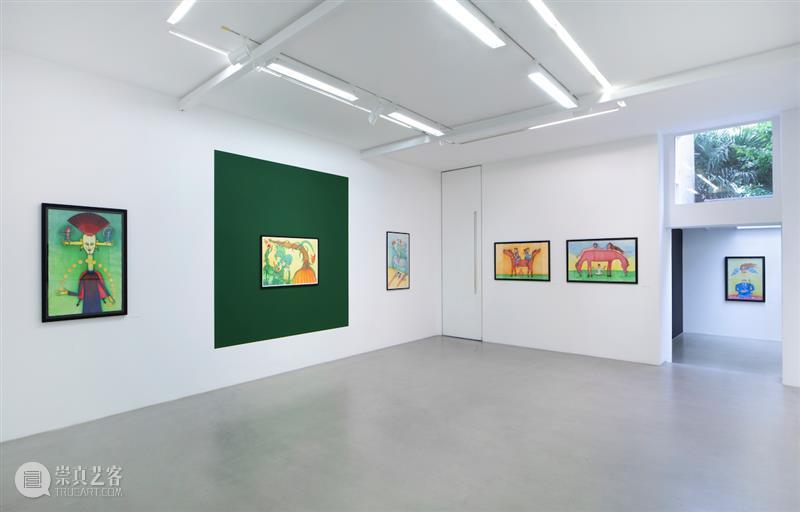
pascALEjandro / “炼金雌雄同体”展览现场,卡迈勒 · 梅隆赫画廊,2021
© pascALEjandro.
Photo. archives kamel mennour
Courtesy the artist and kamel mennour, Paris / London
卡迈勒 · 梅隆赫:pascALEjandro是怎样开始创作的?pascALEjandro:帕丝卡勒和亚历杭德罗两人各自有非常强烈的爱情理想。亚历杭德罗想与一个对艺术有相似理念的人共同生活,他理想中的伴侣是一位画家,从而能与对方有真正的交流。而帕丝卡勒早就有预感并期待着遇到未来的伴侣。她在认识亚历杭德罗之前就能描绘出对方,即使并不知道那是谁。17年前,在一次塔罗占卜活动中,两人相遇了,然后亚历杭德罗去了帕丝卡勒在做展览的画廊,连看也没看就买了其中一幅画!然后我们两人差不多立刻就在一起了。帕丝卡勒看到了亚历杭德罗在很久以前画的素描。他提议由她给这些素描上色,但她不想破坏这些具有珍贵历史价值的作品的完整性。于是亚历杭德罗提出由自己创作一些新的画,然后由她来完成上色。这种双人创作的形式就此诞生了,并且有了一个全新的名字:pascALEjandro。pascALEjandro / “炼金雌雄同体”展览现场,卡迈勒 · 梅隆赫画廊,2021© pascALEjandro.
Photo. archives kamel mennour
Courtesy the artist and kamel mennour, Paris / London
卡迈勒 · 梅隆赫:我开始宣传这个展览的时候,人们告诉我亚历杭德罗在巴士底广场的咖啡馆给人免费算塔罗牌。你们两人好像也是因为塔罗牌认识的。那么pascALEjandro是不是也会用到塔罗牌呢?pascALEjandro:是的,我们是通过塔罗牌认识的。在几十年里,亚历杭德罗在巴黎的一间咖啡馆免费给来自世界各地的几千个人算过塔罗牌。他把这当作对人类的一种馈赠。帕丝卡勒来过一次他的塔罗活动,两人的相遇像是一种共同的启示。要知道塔罗牌在亚历杭德罗看来是一种神圣的语言。塔罗牌被记住之后,它们会在无意识中发挥作用,如同指导思维的框架。亚历杭德罗几乎每天都会算塔罗牌,这已经成为他日常的一部分。解读塔罗牌需要进入一种近乎神圣的状态,避免操控他人,也需要一种绝对的善意,对他人不带任何评判。亚历杭德罗每天都会发现新的解读方式,如同一种持续不断的创造性在他面前展开;而帕丝卡勒是他的第一个观众,为他所折服,因为他会将她作为解读对象。塔罗牌是对一整个世界的探索,一种自我认知的对象。它通过分析过去来提供理解当下的钥匙并作用于未来。总之,塔罗牌在pascALEjandro的生活中占有重要的位置,就像一个善意的导师。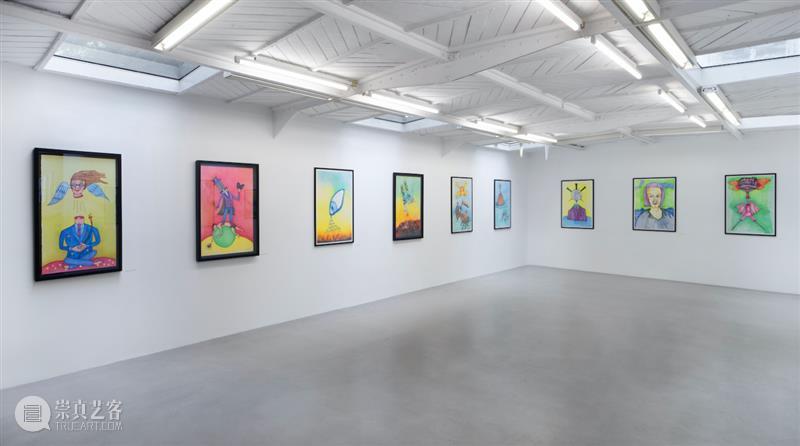
pascALEjandro / “炼金雌雄同体”展览现场,卡迈勒 · 梅隆赫画廊,2021
© pascALEjandro.
Photo. archives kamel mennour
Courtesy the artist and kamel mennour, Paris / London
卡迈勒 · 梅隆赫:所以pascALEjandro从塔罗牌中学习。那是不是对创作也有影响呢?pascALEjandro:观看者应该去发现我们的画中蕴含的情感和灵性。没有人真正知道我们想表达的是什么。比如说,在《YES》里,看不出来是一个男人还是女人。人物说“Yes”。但是对什么说是?为什么?来发现我到底是什么。这就是画面的讯息。在我们的画里有两种视角,就像塔罗牌一样:每张牌从来都不是纯粹正面或负面的,其含义取决于几张牌排列的方式。第13张牌,可以象征死亡,也可以代表一种彻底的改变。在我们的作品中,也是这个道理,画面的含义从来不是封闭或最终的。我们意识到,观看的人不同,其心理状态、个人历史、敏感点的不同决定了对画面的解读也完全不同。而有些视角甚至出乎我们的预想,却又往往如此精准。
pascALEjandro / “炼金雌雄同体”展览现场,卡迈勒 · 梅隆赫画廊,2021© pascALEjandro.
Photo. archives kamel mennour
Courtesy the artist and kamel mennour, Paris / LondonpascALEjandro:绝对是!观看的人也是画面创作的一部分。一切都是开放的,没有封闭的解读。我们不想设限,这就像一个窗口,通向一整个世界,在其中每个人都能感到自在,能看到直接引发其共鸣的东西,就像塔罗牌一样。在我们的画和塔罗牌之间还有另一种相似性。亚历杭德罗在解读塔罗牌的时候,有一种超然的能力,因为他本质上是艺术家,而且还是获得公认的艺术家。他在别人眼里的存在感不需要通过塔罗牌。因此他能像一个圣人一样去算。同样地,当我们两人进行创作的时候,并不是停留在合作创作的层面,因为既不是亚历杭德罗和帕丝卡勒,也不是帕丝卡勒和亚历杭德罗,而是pascALEjandro的共同创作。这意味着我们各自隐去了自己,让位给了从我们的结合中诞生的第三个实体。这对于自我(ego)是一种很好的练习,因为我们认为艺术家应该为创作而不是其自我服务。而在我们的双人创作活动中,没有别的选择。共同创作,既牺牲自我也有双人创造的美妙。pascALEjandro / 《天堂》,2017 / 墨水,水彩颜料,彩色铅笔,纸 / 65 x 102 cm Courtesy the artist and kamel mennour, Paris/London卡迈勒 · 梅隆赫:你们也共同投入电影创作。电影创作和绘画有什么区别?pascALEjandro:有两件事不同。当pascALEjandro在创作的时候,帕丝卡勒和亚历杭德罗处在同样的位置,消除自我从而让位给这第三个实体。绘画是一种共同创作原则。其媒介是图形化和画面性的,但也可以向其他东西演变,例如电影。影片《现实之舞》(La Danza de la Realidad)、《诗无尽头》(Poesía Sin Fin)和《心理魔术,治愈的艺术》(Psychomagie, un art pour guérir)中的色彩就是由pascALEjandro创作的。当作为导演的亚历杭德罗 · 乔多罗夫斯基在实现一部电影时,团队需要配合他的视角,也包括帕丝卡勒。她给《现实之舞》和《诗无尽头》设计了服装,并且是第三部电影的摄影指导。在这种情况下,她的创意就需要服务于作为导演和主要创作者的亚历杭德罗的视角。对我们而言,生活和艺术密不可分。一切都在共同创造或两人各自创造性互通的开放性原则中合而为一。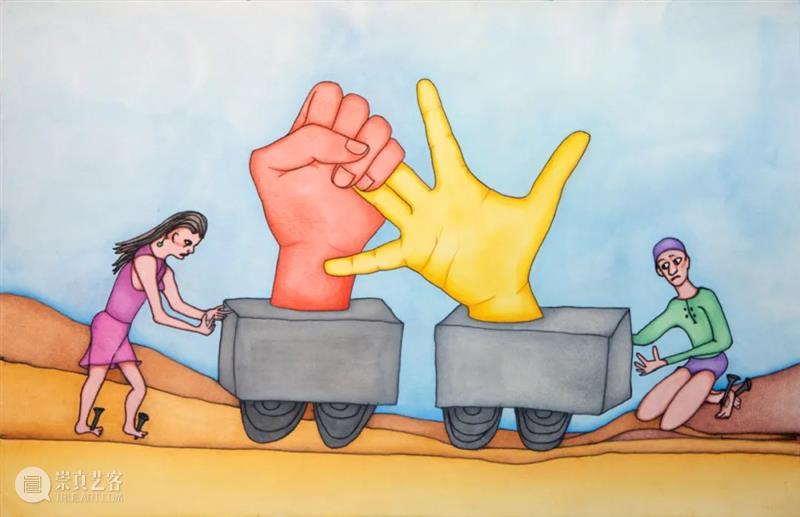
pascALEjandro / 《艰难的结合》,2021 / 墨水,水彩颜料,彩色铅笔,纸 / 65 x 102 cm
© pascALEjandro.
Photo. Dennis Bouchard
Courtesy the artist and kamel mennour, Paris/London
卡迈勒 · 梅隆赫:关于颜色,帕丝卡勒,是不是有一种定式?你收到亚历杭德罗的素描的时候,是不是已经知道要用哪些颜色?帕丝卡勒:主要是直觉。亚历杭德罗认为他的素描来自自己的无意识层面。他把素描交给我之后,我会先体会其中的氛围。然后我会想象画面里光和影、冷和暧的部分。然后颜色就会像梦的启示一样降临。奇怪的是,我在独自创作的时候,偏爱的颜色会自动地限于偏冷的色调,有时甚至没有颜色,仅仅是黑和灰,但必定有光亮处,即使是在黑暗区域……而当我开始给亚历杭德罗的素描上色,拓展色域就变得显而易见,到今天我在色彩运用上没有了任何的限制。我会让色彩自己在我脑中浮现,因为我相信颜色首先是光。颜色和素描产生对话,使后者丰满充实。在pascALEjandro创作形式的演变中,可以发现线条和颜色的融合越来越明确。我更敢于用颜色来介入线条了,当然,这是出于爱意的。而过去我没那么放得开,因为还是从尊重的角度出发,觉得绝对不能碰他的线条。从某种程度上说,虽非本意,但当时的我也阻碍了两人创作部分的融合。今天就不同了。最终,一个人少了另一个就无法存在。当亚历杭德罗完成了一幅素描,色彩会来点亮它,这一感觉很打动我们。当然,只有颜色而没有素描本身也是毫无意义的。pascALEjandro / 《天堂的孩子》,2021 / 墨水,水彩颜料,彩色铅笔,纸,手工物品拼贴 / 102 x 65cm Courtesy the artist and kamel mennour, Paris/London
pascALEjandro:心理魔术是亚历杭德罗创造的一种疗法,通过行为而不是语言,直接针对无意识,来治愈心理问题。治愈的力量不是来自词语,而是行为。当他明确了问题或幻想所在,会提议做出一种带有诗意的行为来让人获得解脱,因为有时候我们能从理智上明白一种状况但却无法真正地摆脱。有一幅作品画的是亚历杭德罗的其中一个儿子,他在二十四岁去世。画面中的Teo通过两个角度来表现:既有死亡的悲伤,同时也有他在生命的最后时刻参加聚会的欢乐氛围。如此表现他是一种驱除悲剧性事件的方式。心理魔术在某种程度上能让我们进行宣泄,通过让无意识去接受来帮助我们脱离困境或痛苦。卡迈勒 · 梅隆赫:最后,我想听听你们介绍一下《永远的pascALEjandro》这件作品。画面中是一座坟墓,上面有你们两人的照片,巨大的蜜蜂围绕在你们周围。这件作品非常特别……pascALEjandro:这件作品表现了我们自己的死亡。这也是一种心理魔术行为:驱除对分离和死亡的恐惧。这几乎是一种通过从象征和隐喻的层面实现这一恐惧来驱逐它的方式。亚历杭德罗今年92岁了,我们觉得他一只脚已经在踏向另一个世界,但是说到底死亡可能在任何时刻、任何年纪到来,而最可怕的是分离。所以我们直面它:需记得我们不是不死之身。因此我们问过自己这个问题:假如两人一同死去呢?这样我们就不会害怕。对时间的意识赋予了一层重量,也让我们在体验爱情和进行创作时更趋向本质。从某种程度上说,这把达摩克利斯之剑悬在头上是件好事,因为让我们更快地意识到更多的事情,从此我们便活在永恒的当下之中。Courtesy the artist and kamel mennour, Paris/London
帕丝卡勒 · 蒙当东-乔多罗夫斯基1972年生于巴黎,同时是画家、摄影师、戏剧服装和舞台布景设计师。亚历杭德罗 · 乔多罗夫斯基1927年生于智利托科皮亚,是电影导演、诗人、漫画编剧和心理魔术创造者。两人的艺术组合pascALEjandro曾在世界各地的机构展出,并曾为乔多罗夫斯基的电影《现实之舞》、《诗无尽头》、《心理魔术,治愈的艺术》设计色彩。
kamel mennour
4 September - 9 October 2021
7 rue Saint-André-des-Arts Paris 6Kamel Mennour is pleased to present "Alchemichal Androgynous", an exhibition specially dedicated to the work of pascALEjandro. For the last fifteen years, Pascale Montandon-Jodorowsky and Alejandro Jodorowsky have been creating a joint body of work, a ‘spiritual child’ whose makers’ name is a fusion of their own. This nucleus of magical creation, the product of their artistic and amorous union, emanates with a passionate, human conception of love and life.Kamel Mennour: Dear Pascale, dear Alejandro, at the moment I am speaking with pascALEjandro, your spiritual child, whose works I am greatly looking forward to showing soon at the gallery. Can you tell me a little more about pascALEjandro’s genesis? How was s/he born?pascALEjandro: pascALEjandro was born out of our love for each other. When we first met, it was not just an encounter, we recognized each other. Our love preceded us: the universe wanted the last three letters of Pascale’s name to be the same as the first three letters of Alejandro’s. And then the universe wanted us not to have a child. We had wanted to, despite the difference in age, but nature would not have it so. That’s how pascALEjandro came into the world, a symbolic child with just the same energy as any biological child would have had. It is a third entity, the fruit of our love, who would not exist without one or the other of us, and who changes and grows autonomously. In our case, this two-part creation is probably even stronger than if we had had a biological child. We are in agreement with one another on a number of levels: intellectually, emotionally, sexually, and bodily (which corresponds to the four aces of the Tarot: sword, cup, wand, and pentacle), and these elements of concord keep developing. It’s why pascALEjandro is constantly developing.Kamel Mennour: How did pascALEjandro start making work?pascALEjandro: Pascale and Alejandro each had a very strong ideal of love. Alejandro wanted to share his life with someone who understood art the way he did. Ideally, he wanted to marry a painter, with whom he could really share what they had in common. Pascale had waited for this encounter like a premonition. She could describe Alejandro even before meeting him, before even knowing who he was. Seventeen years ago, after we met during a Tarot reading, Alejandro went to the gallery where Pascale was exhibiting and bought one of her paintings, without even seeing it! We became a couple almost instantaneously. Pascale discovered drawings that Alejandro had made a long time ago. He suggested she colour them but she didn’t want to interfere with the integrity of those precious, archival drawings. So Alejandro proposed to make new ones that she could colour. That’s how this two-person work was born, under one name: pascALEjandro.Kamel Mennour: When I talk about this exhibition, people tell me that Alejandro used to do Tarot readings for free in the cafés in Bastille. You met thanks to the Tarot. Does pascALEjandro use the Tarot?pascALEjandro: Yes, we met through the Tarot because for decades Alejandro did indeed do free Tarot readings in a café in Paris for thousands of people from all over the world. He did it as a gift to humanity. Pascale came to one of his readings and their encounter was a revelation for both of them. For Alejandro, the Tarot is a sacred language. When you memorise the cards, they enter your unconscious like an architecture that orients your thinking. Alejandro reads the Tarot almost every day, and he has absorbed it. You have to be in an almost saintly state in order to be able to read without there being a risk of exercising power over the other. You must be in a state of absolute benevolence and non-judgement towards the other. Every day, Alejandro discovers new ways to read it. It’s like a perpetual creation that reveals itself to itself, and Pascale is his first, astounded spectator, since he practices it on her. The Tarot is the exploration of a world, a way of knowing oneself. It gives you keys to understand the present through analysing the past, so that you can act in the future. The Tarot is very present in pascALEjandro’s life, as a benevolent guide.Kamel Mennour: So pascALEjandro is influenced by the Tarot. Is there an influence on the works?pascALEjandro: Our painting has an emotional and spiritual content that the viewer must discover for him or herself. No one really knows what we wanted to express. For instance, with YES, you can’t say whether it’s a man or a woman. The figure says Yes. But who does it say it to? Why? Find out what I am. That’s the message. There are always two points of view in our paintings, like in the Tarot, where the arcana are not strictly negative or positive, but rather their meaning depends on the way the cards are placed. Arcanum XIII for instance, which can represent death, can also be a sign of great change, of transformation. It’s similar in our works, in the sense that their meaning is never fixed and definitive. We have been fascinated to discover that their interpretation can completely change depending on who is looking at them, according to that person’s physiology, their history, their sensibility... And it is always something true, sometimes it even reveals aspects of the piece that had escaped our attention until then.Kamel Mennour: That means the viewer has a role to play.pascALEjandro: Absolutely! The viewer helps create the work. It’s an open field, there’s no closed interpretation. It’s a window, an opening on to a world that we don’t want to wall in, where everyone should be able to recognize themselves, read things that address themselves directly to them, exactly like in the Tarot. There’s another parallel between the Tarot and our painting. When Alejandro reads the Tarot, he can maintain a certain distance, since he is fundamentally an artist, and a recognized one to boot. He doesn’t need the Tarot in order to exist in the eyes of other people. So he can do it almost like a saint would. In the same way, when we make a joint work, which is more than just a collaboration because it’s not Pascale and Alejandro, or Alejandro and Pascale, it’s pascALEjandro, each of us makes ourselves invisible in order to make room for this third entity that has come from our union. In a way, it’s a very good exercise for the ego, because we believe that an artist should serve his or her work and not his or her ego. In this case, we’re forced to. Working together means sacrificing the ego and that’s what’s so wonderful about a joint creation.Kamel Mennour: You have worked together for the cinema also. Where does the work on the films differ from the work on the drawings?pascALEjandro: There are two distinct things. When it’s pascALEjandro who creates, Pascale and Alejandro are on the same footing and efface themselves in order to let this third, transpersonal entity take over. The drawings work on the principle of shared creation. The medium is graphic and pictorial but it can develop into something else, film for instance. The colours for La Danza de la Realidad, Poesía Sin Fin, and Psychomagie, un art pour guérir were created by pascALEjandro. When Alejandro Jodorowsky directs a film, the team he asks to help him will place itself in the service of his vision, Pascale included. She made the costumes for La Danza de la Realidad and Poesía Sin Fin, and she was the director of photography for Psychomagie, un art pour guérir. In this instance, she places her own creativity in the service of Alejandro’s vision. He is the film’s director and its chief creator.There is no separation between life and art for us. Everything is united in an open principle of shared creation, or one of communicating vessels, a back-and-forth between our respective creations.Kamel Mennour: Since we’re talking about colour, Pascale, is it codified? When you receive Alejandro’s drawings, do you know already what colours you’re going to use?Pascale: It’s basically intuitive. Alejandro believes that he receives his drawings from his unconscious. When he gives them to me, I first concentrate on absorbing their climate. Then I mentally divide them into zones of light and shade, warm and cool, then the colours come like in a dream. The surprising thing is that when I worked alone, my colour palette was deliberately very limited to rather cool colours, even the absence of colour: blacks, greys, above all light, even in darkness... When I started colouring Alejandro’s drawings, widening my chromatic field was an obvious direction, and now there’s not limit. I let them come to me, because I think colours are above all light. Colour enters into a dialogue with the drawing, gives it flesh and blood. If you look at pascALEjandro’s formal development, you can see that line and colour progressively mingle with one another. I give myself more permission to go into the line with the colour now, with love of course. I didn’t give myself so much permission before, I respected Alejandro’s line too much to touch it, so in a way I involuntarily held up the fusion that is at work now. In the end, neither can exist without the other. It moves us to feel that when Alejandro finishes a drawing, the colour awakens it. But obviously, without the drawing, this colour on its own would be meaningless.Kamel Mennour: And how does psychomagic come into all this?pascALEjandro: Psychomagic is a therapy that Alejandro created for healing psychological troubles through acts rather than speech, through directly addressing the unconscious. Healing comes from acts, not words. Once he has identified the problem or the fantasy, Alejandro proposes a poetic act for freeing oneself from it, since you can sometimes understand a situation intellectually without managing to resolve it. One of our artworks deals with the death of Alejandro’s son at twenty-four. In the painting, you see Teo in two lights. There is the tragic event of his death, and at the same time the festive joy of his final moments. Representing him in this way is a way of exorcising this dramatic event. Psychomagic is a way of achieving a catharsis that can help us get out of difficult or painful situations by getting our unconscious to accept them.Kamel Mennour: I’d like to end by asking you to tell me a little about pascALEjandro forever. The drawing shows a tomb with a photo of the two of you surrounded by oversized bees. It’s a very unusual work...pascALEjandro: This work illustrates our own death. It’s also an act of psychomagic: exorcise the terror of separation and of death in general. It’s almost a way of fulfilling it, of executing it symbolically or metaphorically in order to exorcise this fear. Alejandro is ninety-two-and-a-half years old, for us he has one foot in the other world, but in the end death can come at any time, at any age, and the most terrifying thing is separation. We face each other: we cannot pretend that we are not mortal. So we asked ourselves the question: what if we died together? That way we aren’t afraid. Being conscious of time gives things their proper weight and makes it all the more essential to live our love and carry out our work. In a way, we are lucky to have this sword of Damocles hanging above us because it has made us aware of many more things, much faster, and now we live in an eternal present.Kamel Mennour: Un amor sin fin...Born in 1972 in Paris, Pascale Montandon-Jodorowsky is a painter, photographer, costume designer and stage designer.Born in 1929 in Tocopilla, Chile, Alejandro Jodorowsky is a filmmaker, poet, comic book writer and creator of psychomagic art.Exhibited in many museums around the world, pascALEjandro has created the colors of Alejandro Jodorowsky's films: La Danza de la Realidad, Poesía Sin Fin and Psychomagie, un art pour guérir.

CURRENT EXHIBITIONS
 pascALEjandro
pascALEjandro
L'androgyne alchimique
47, rue Saint-André-des-Arts, Paris 6
04/09 - 09/10/2021
 Bertrand Lavier
Bertrand Lavier
Nouveaux Tableaux 2005
5, rue du Pont de Lodi, Paris 6
04/09 - 09/10/2021
 Bertrand Lavier
Bertrand Lavier
La Bocca / Haier 2005
28, avenue Matignon, Paris 8
04/09 - 09/10/2021
 Daniel Buren, Latifa Echakhch, David Hominal, Bertrand Lavier, François Morellet, Robin Rhode, Ugo Rondinone
Daniel Buren, Latifa Echakhch, David Hominal, Bertrand Lavier, François Morellet, Robin Rhode, Ugo Rondinone
Landscape of Geometry II
6, rue du Pont de Lodi, Paris 6
04/09 - 09/10/2021

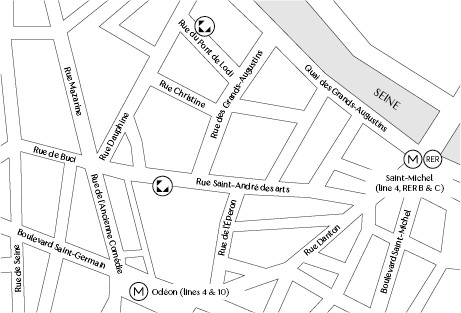
47, rue Saint‑André‑des‑Arts
75006 Paris
France
&
5 & 6, rue du Pont de Lodi
75006 Paris
France
+33 1 56 24 03 63
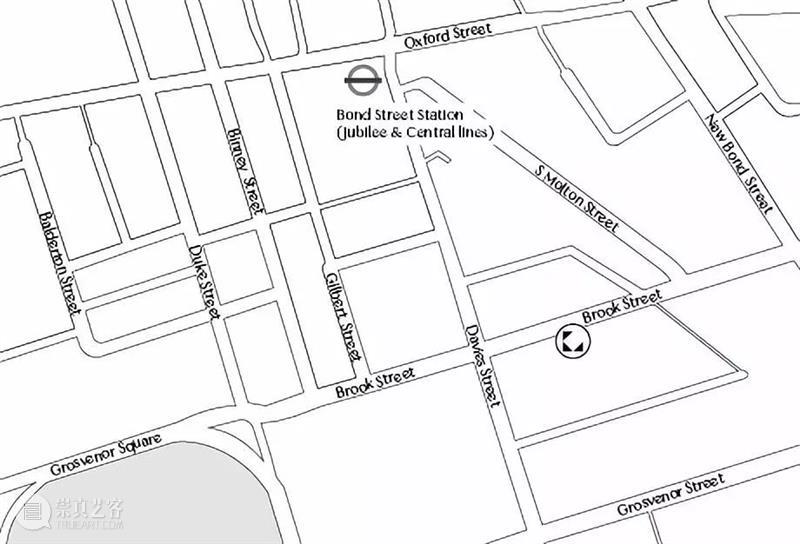
51 Brook Street
London W1K 4HR
United Kingdom
+ 44 207 495 32 00
识别二维码,关注画廊官方微信
点击阅读原文,进入画廊官方网站
如需转载,请注明出处
 Website: www.kamelmennour.com
Website: www.kamelmennour.com
 WeChat: kamel_mennour
WeChat: kamel_mennour Facebook: kamel mennour
Facebook: kamel mennour Instagram: kamelmennour
Instagram: kamelmennour
 E-mail: galerie@kamelmennour.com
E-mail: galerie@kamelmennour.com


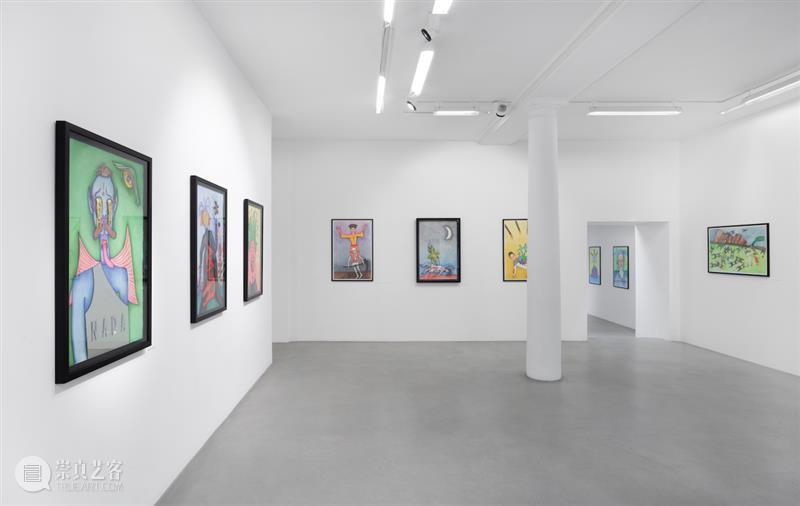

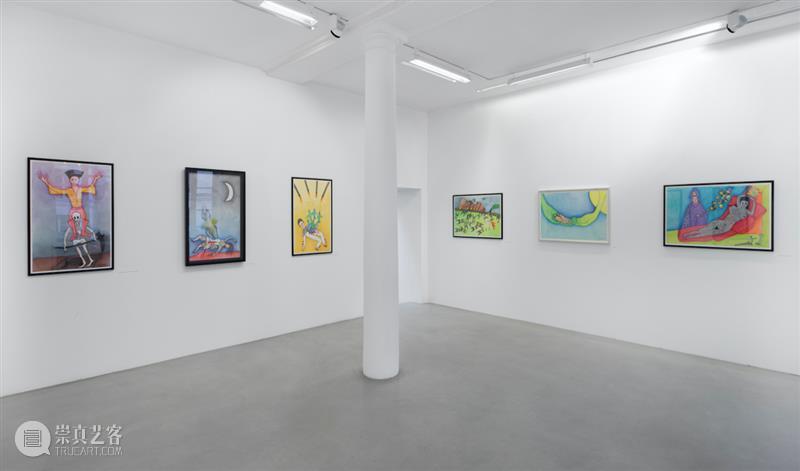

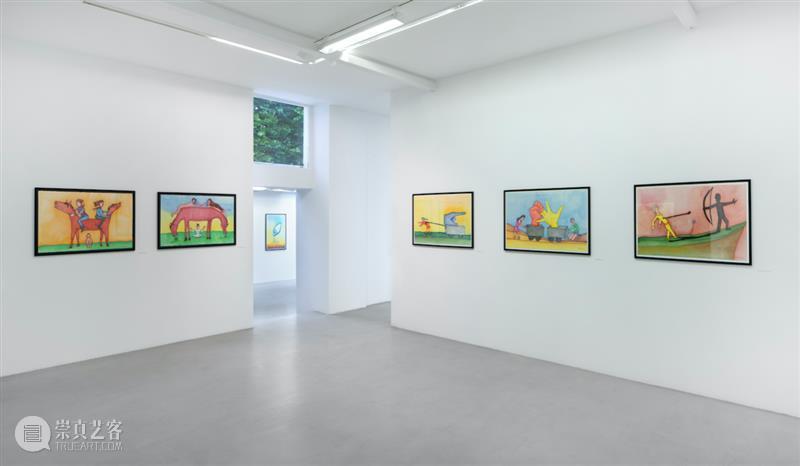

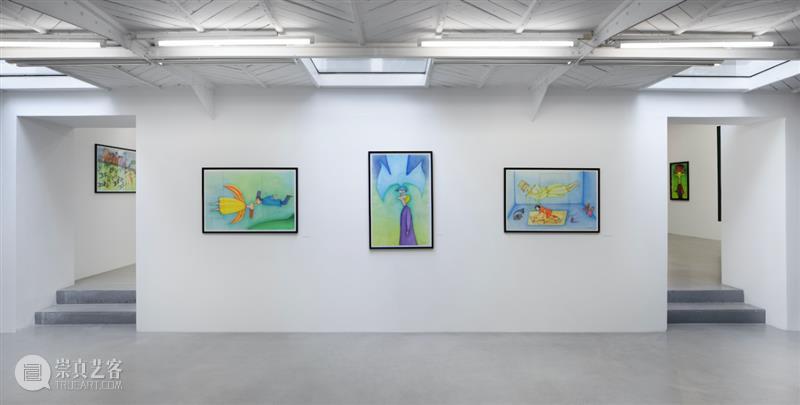
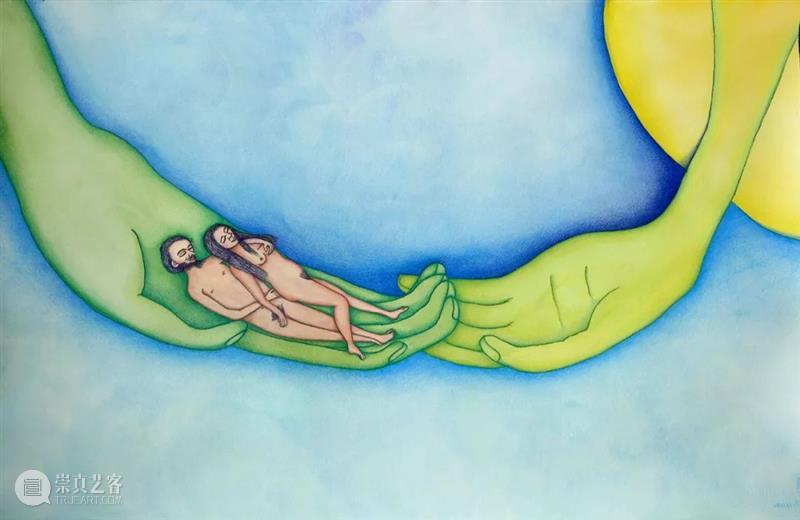

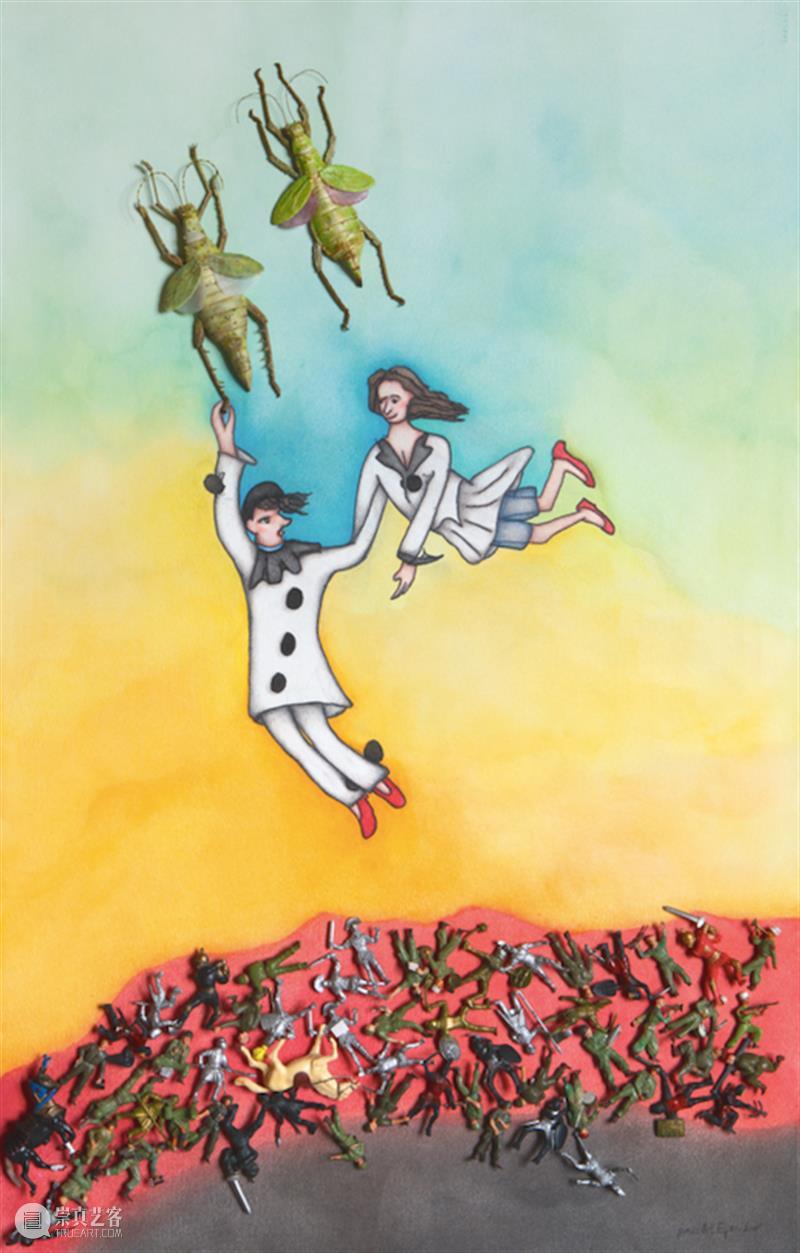
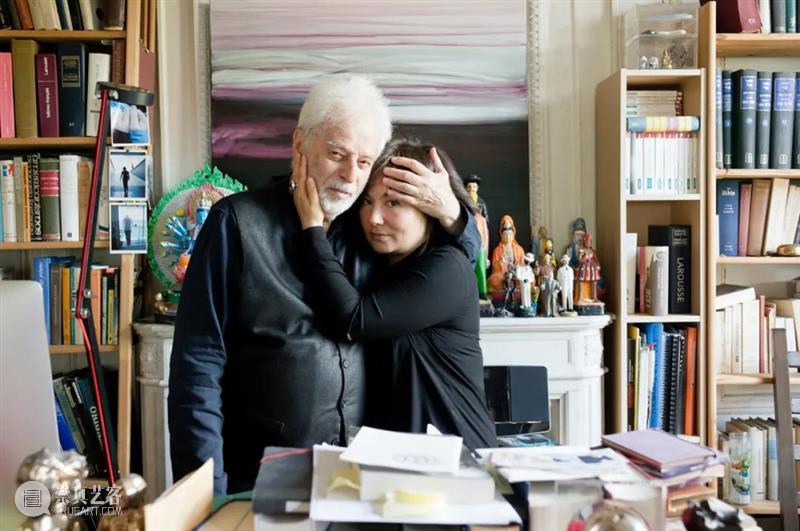



 pascALEjandro
pascALEjandro Bertrand Lavier
Bertrand Lavier Bertrand Lavier
Bertrand Lavier Daniel Buren, Latifa Echakhch, David Hominal, Bertrand Lavier, François Morellet, Robin Rhode, Ugo Rondinone
Daniel Buren, Latifa Echakhch, David Hominal, Bertrand Lavier, François Morellet, Robin Rhode, Ugo Rondinone


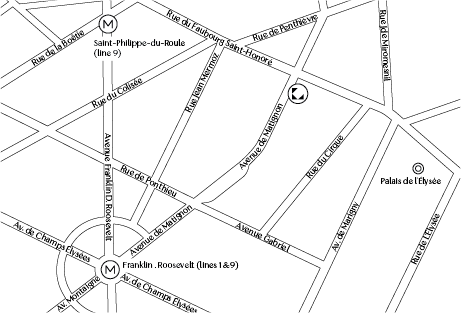

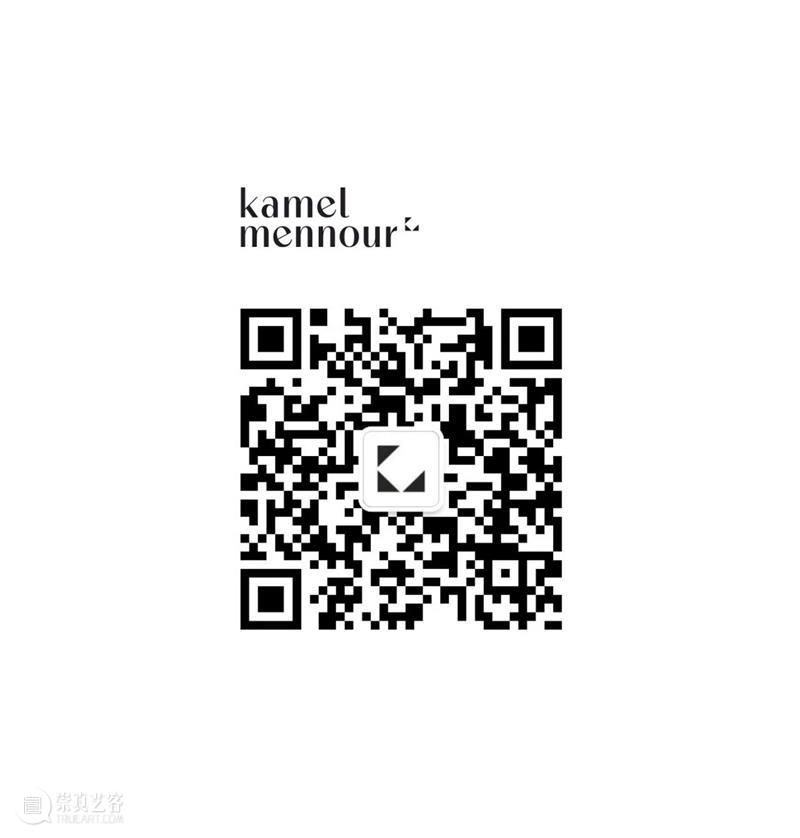
 Website: www.kamelmennour.com
Website: www.kamelmennour.com WeChat: kamel_mennour
WeChat: kamel_mennour Facebook: kamel mennour
Facebook: kamel mennour Instagram: kamelmennour
Instagram: kamelmennour E-mail: galerie@kamelmennour.com
E-mail: galerie@kamelmennour.com






 分享
分享